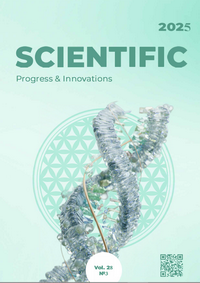The role of goat farming in ensuring food security in the context of climate change
DOI:
https://doi.org/10.31210/spi2025.28.03.22Keywords:
goats, adaptation, milk, physicochemical parameters, Saanen breed, Alpine breed, Anglo-Nubian breedAbstract
The purpose of the review was to analyze the current state and prospects of goat farming development in Ukraine, particularly in the Poltava region, taking into account the biological characteristics of goats, economic factors, and the social significance of the industry, as well as to identify promising research directions. The article explores the role of goat farming in ensuring food security amid climate change, with emphasis on the nutritional and therapeutic properties of goat milk and the socio-economic prospects of the sector in Ukraine. While dairy farming remains a leading branch of livestock production, rising temperatures and heat stress reduce cattle productivity. Goats, however, are more adaptable to diverse climates and can utilize forage unsuitable for cattle, making them a promising alternative under global warming. Goat milk is highly digestible, hypoallergenic, and rich in proteins, minerals, vitamins, and bioactive compounds. It contains a higher proportion of medium-chain fatty acids, bioavailable minerals, and human-like oligosaccharides that support gut health, mineral absorption, and immune function. These properties highlight its value for infants, allergy sufferers, and functional food production, while also underscoring its potential as a nutraceutical resource. In Ukraine, goat milk products remain underrepresented in the market, yet the sector offers strong economic and social benefits. Although production costs exceed those of cattle, higher market prices and relatively low competition make goat farming attractive for small and medium-sized enterprises. Moreover, it supports rural development and employment, requiring lower capital investment and providing faster returns compared to dairy cattle. Globally, goat milk represents around 2 % of total production, with India and Mediterranean countries as leading producers. In Ukraine, the goat population is modest and declining, though it includes high-yielding breeds such as Saanen, Alpine, Toggenburg, and Anglo-Nubian, often crossbred with local stock. Enhancing productivity through improved feeding, breeding, and climate adaptation is critical to offsetting herd reductions. The study concludes that goat farming can become a strategically important direction for Ukraine, combining biological advantages, economic viability, and social significance. Expanding processing capacity, diversifying dairy products, and raising consumer awareness of goat milk’s health benefits are key to strengthening demand. Given their resilience to heat stress, goats are expected to play an increasingly important role in sustainable agriculture, with regions like Poltava region offering considerable potential for sectoral growth.
Downloads
Published
How to Cite
Issue
Section
License
Copyright (c) 2025 Scientific Progress & Innovations

This work is licensed under a Creative Commons Attribution 4.0 International License.

 Creative Commons Attribution 4.0 International Licens
Creative Commons Attribution 4.0 International Licens